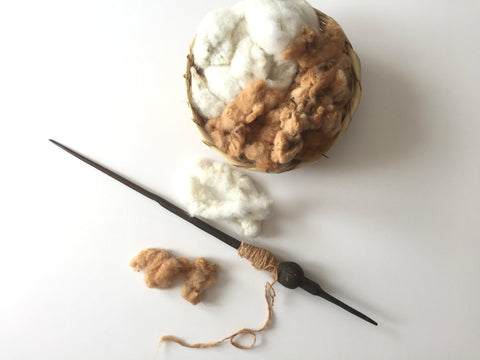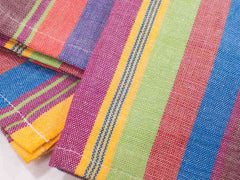
The fibers come from the boll, the seedpod of the cotton plant, making it a natural product and not man made. China, India and the United States are the leading producers of cotton with over 16 million metric tons combined. It is the most popular yarn to be used for fabrics!
The photo above shows both the brown cotton boll and the white boll; both colors have been grown in Guatemala for centuries. The antique spindle shown comes from Guatemala and is the style used by Mayan women; handcarved with a small whorl. The women would spin the cotton to make yarn which was then woven on the backstrap loom into the clothes for their families and other cloths needed for their homes. Today there is very little cotton grown in Guatemala and very few women still spin their own yarn, preferring to buy the yarn at the local store. However, the backstrap loom is still very much in use by the Mayan women especially in the rural western highlands.
Cotton yarn can be woven into a fabulous fabric because it is:- a natural product
- soft and comfortable
- no static electricity
- cool to wear
- a renewable resource
- very durable, especially when handwoven

Like linen, another natural fabric, cotton fabric wrinkles. When taken from the washer and dryer the first time it will be wrinkled and will need to be ironed. However, the more it is washed and dried the natural fibers of cotton seem to meld together and there is much less wrinkling. Soon the fabric can be pulled from the dryer and can be smoothed out with your hands. This is especially true of handwoven cotton textiles. The photo above shows the difference between the first time through the washer and dryer and how smooth the handwoven napkin is after being used then tossed in the washer and dryer a few times..

With handwoven kitchen linens such as napkins and towels you may be frustrated with the amount of wrinkles at first, but have patience and you will be rewarded with amazingly soft and absorbent textiles that will last for years.
So don’t give up on natural cotton - just wash it again and give it a little more time! You can see Fair Trade handwoven linens here.
Sources:
Learn more about the history of cotton
Why Natural Fibers Wrinkle - an in depth look at fibers